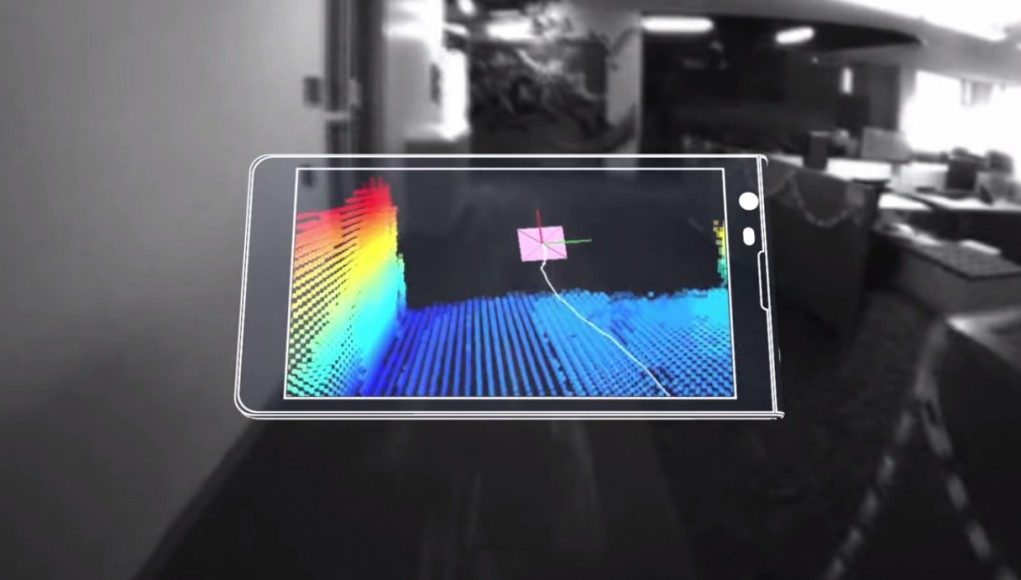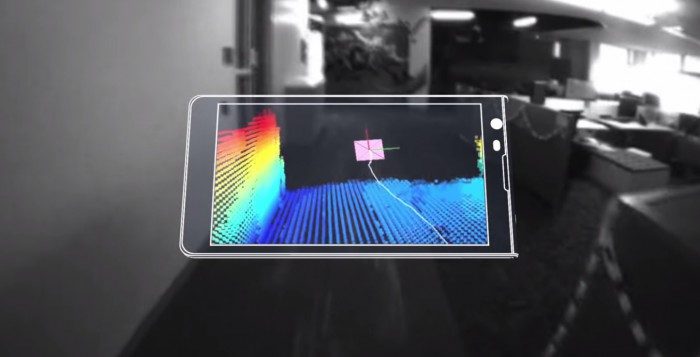Google will be demoing some of their new sensor-assisted virtual reality technology at this year’s Game Developers Conference in San Francisco, which promises to “enable Holodeck-like experiences with less than $100 add-on cost” to mobile devices. While not explicitly named, we’ll eat our access badges if they’re not going to talk about their realtime environmental mapping dev kit, Project Tango.
Listen to this story (experimental):
See Also: Samsung Gear VR and Google Project Tango Support Coming to Unreal Engine 4
Google is calling the demo session ‘Transmogrified Reality‘, and we’ll save you a trip to the dictionary for this one: according to Google, transmogrify means ‘to transform in a surprising or magical manner,’ a clear departure from all of this talk about holo-this and holo-that surrounding Microsoft’s recently unveiled HoloLens.
Noah Falstein, Google’s Chief Game Designer, will be presenting the technology during a session that promises to deliver “an improved, inexpensive, less-disorienting kind of virtual reality that incorporates any surrounding real-world elements at will.” By its description, it sounds like an ‘augmented virtual reality’ rather than pure AR or pure VR, much like the mixed experiences enabled with Leap Motion. If our hunch is correct, it might mean Google is integrating technology from Project Tango with “inexpensive head mounts” like Google Cardboard for a smartphone-driven mixed AR/VR experience.
I am increasingly convinced we stand on the brink of a new era where we can seamlessly blend virtual and real #transmogrifiedreality
— Noah Falstein (@nfalstein) January 11, 2015
In short, Project Tango senses depth and maps the user’s environment in realtime, potentially even usable as a self-contained positional tracking system without the need for an external camera watching the user. According to iFixit, the tablet version of Project Tango is using a 120 degree front-facing camera, 4MP RGB-IR rear-facing camera, and a 170 degree motion tracking camera, but has only since found its way into the hands of vetted developers. Only 4 days ago however, Google moved the project from their Advanced Technology and Projects (ATAP) group to its new home within Google itself—a sign that the company is ready to put some serious weight behind the endeavor.
They’ve also teased the open release of Project Tango’s tablet dev kit by putting it on the Playstore back in June, but without a price tag. Rumor has it though that the tablet, which features the new NVIDIA Tegra K1 processor and 4GB of RAM, is priced at just over $1,000 USD—disqualifying it for inclusion into Google’s transmogrified future of inexpensive devices.
But that’s only for the current tablet dev kit. It’s possible that the advertised “$100 add-on cost” could be a general price quote for the extra pieces needed to make a basic model work, with all the camera trappings and sensor trimmings included—making for a sliding scale of device sizes and prices to be offered by Google. Either way, it will be interesting to see the company’s first real foray into immersive augmented virtual reality (no, we’re not counting Glass either).
Road to VR will have boots on the ground at GDC 2015, taking place in San Francisco March 2-6th. We’ll be reporting on Noah Falstein’s talk on Transmogrified Reality and much more this time next month.








